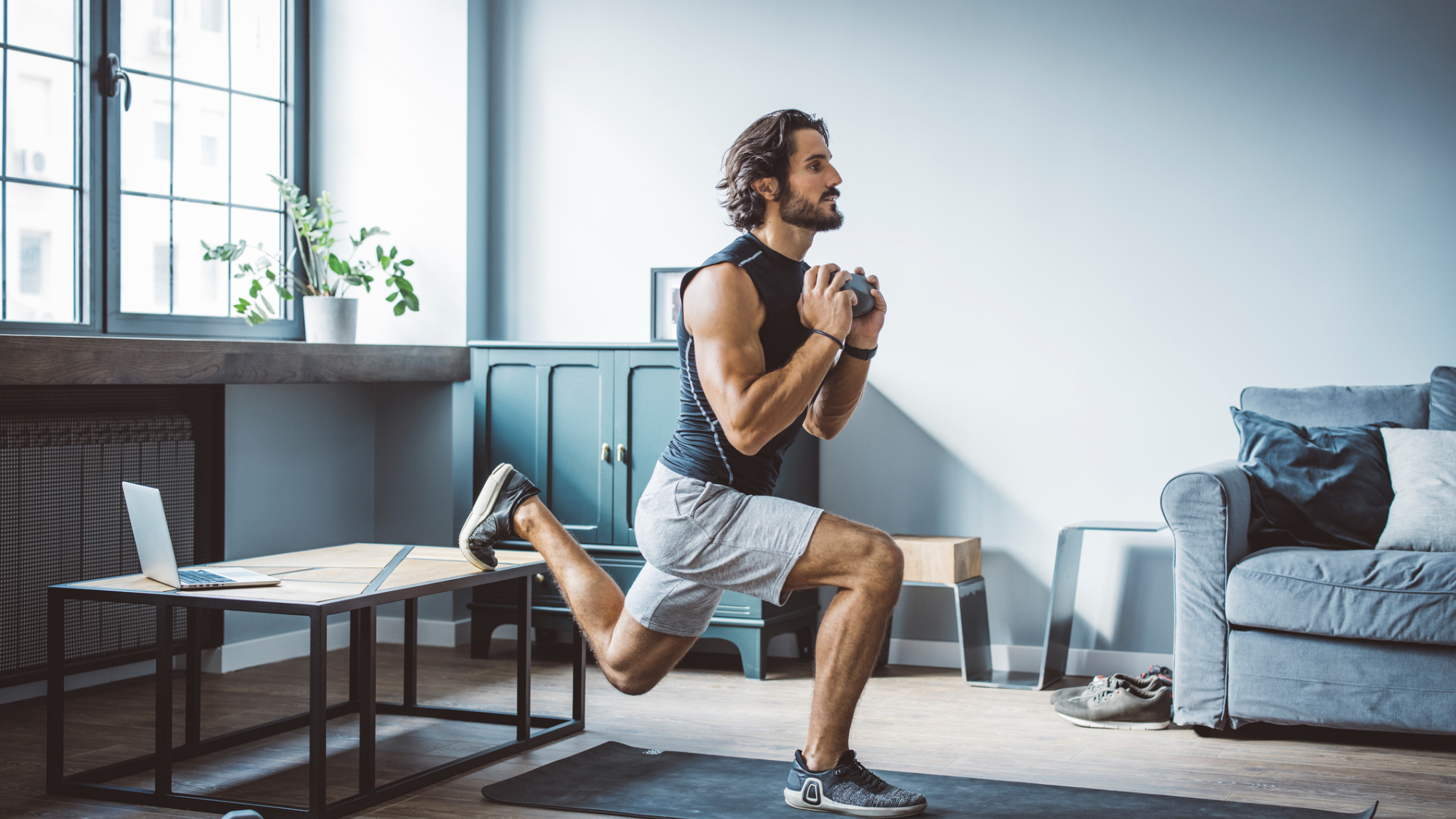
Here at Fit&Well, we give you all the fitness information you need to stand on your own two feet in the gym. But not this time.
Instead, I want to share the benefits of single-leg movements and other unilateral exercises—moves that target one side of your body at a time.
For the last five weeks, I’ve been incorporating more of these moves into my training with the goal of building more strength and muscle. And I’ve already noticed week-on-week increases in the weights I’m able to lift.
Want proof? I’ve noticed my barbell back squat numbers creeping in the right direction; I started by lifting five sets of five reps at 220lb/100kg, and most recently hit four sets of four reps at 115kg/250lb.
That's one of several reasons why I think this strength training technique deserves a spot in your exercise plans.
How I added unilateral exercises into my schedule
I’m a big fan of unilateral exercises but that doesn’t mean every exercise I do is unilateral. I like to use them alongside bilateral moves as part of a well-rounded workout. For example, my leg sessions kick off with barbell back squats, followed by unilateral moves like the lateral lunge and curtsy squat to hit smaller supporting muscles.
The main unilateral moves I’ve been interspersing into my training plans are the:
- Bulgarian split squat
- Dumbbell step-up
- Single-leg Romanian deadlift
- Single-leg dumbbell hip thrust
- Seesaw dumbbell bench press
- Single-arm dumbbell overhead press
- Single-arm bent-over row
What are the benefits of unilateral exercises?
1. Building functional strength
Most of the best-known exercises are bilateral, loading both the left and right sides of the body equally. For example, during squats and deadlifts your right and left legs should be working just as hard as each other.
But we rarely move that way in everyday life. Instead, whether we’re running, walking or just grabbing something off the supermarket shelf, we’re moving unilaterally.
ACE-certified personal trainer and UESCA running coach Melissa Kendter told me she likes to do most of her training unilaterally to "balance out the muscles as much as possible for running, and strengthen the muscles in the hips, knees, ankles and surrounding tendons".
Building this strength will help you develop a more resilient body that’s less susceptible to injury. It also translates to daily life and other exercises in the gym.
For example, if you’re building stronger legs with Bulgarian split squats or dumbbell step-ups, you can be sure your barbell back squat is going to improve.
2. Correcting muscle imbalances
Are you right- or left-handed? The fact that most of us have an oven-baked answer shows that one side of our body is dominant.
Through uneven use, muscular imbalances can emerge between the right and left sides of the body, leading to an increased risk of injury. By focusing on one side of your body at a time, unilateral exercises help to iron these out.
3. Core workout
While working one side of your body at a time, particularly when using dumbbells and kettlebells, you’re often holding a weight away from your center of gravity.
Your mid-body muscles have to work hard to maintain your posture and resist the weight that’s constantly pulling you off balance, providing a bonus core workout.
This is something I’m happy to confirm. After I’ve finished a set of 12-15 Bulgarian split squats, my legs aren't the only body part left feeling fatigued.
4. Safety
If you want to grow stronger, you need to lift weights heavy enough to challenge your body.
This can be intimidating during certain exercises like the bench press or back squat. Why? Because the barbell is on top of you during these lifts; if you can’t finish a rep, you need to bail out safely or risk being pinned.
Doing unilateral moves with dumbbells can challenge the same muscles as these barbell exercises without any risk of a weight coming down on top of you.
I like using the seesaw dumbbell bench presses and Bulgarian split squat as alternatives sometimes because I can drop the dumbbells safely to my sides when I reach failure.
5. Progression
The progressive overload principle underpins any successful strength training program. This simply means making your workouts gradually more difficult as your fitness level improves, providing the stimulus your body needs to continue building strength and muscle.
The most obvious way to make a strength training exercise more difficult is to lift more weight. But, if you train at home with limited equipment, this can be tricky.
You can also up the number of reps you do per set, but this only works to a point—you don’t want to be doing multiple sets of 20-plus reps for every exercise or your workouts will take an age.
Exercise selection is a lesser-known way to increase the intensity of your workouts. For example, if 12 Romanian deadlifts feel easy with the dumbbells you have available, try six to eight single-leg Romanian deadlifts instead.
In the single-leg variation, the one working leg is supporting all of the available load, so you need less weight to challenge yourself.
6. Variety
In my eyes, a good strength training plan finds a Goldilocks premium by balancing consistency and variety.
Consistently doing the same exercises week after week, applying the progressive overload principle, is a surefire way to build strength and measure your progress. But adding new exercises and working your muscles in different ways can be a great way to break through plateaus.
Switching things up is also fun. And if you’re enjoying your training, you’re far more likely to keep coming back for more.
Need help picking some weights for your home workouts? Our guide to the best adjustable dumbbells can help







